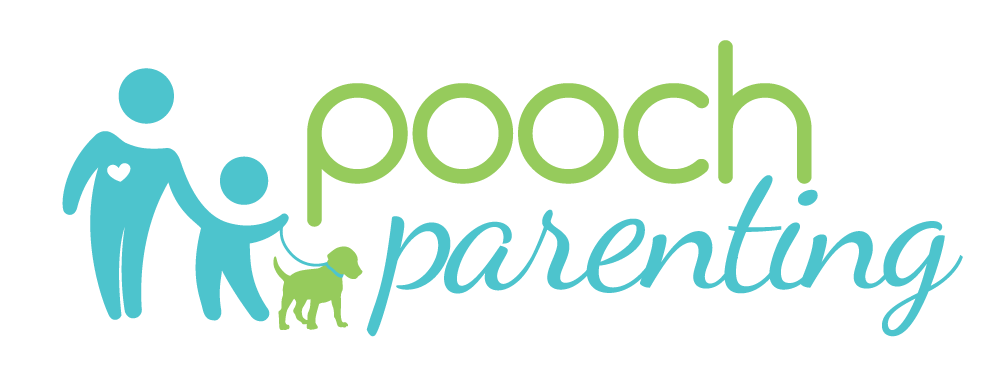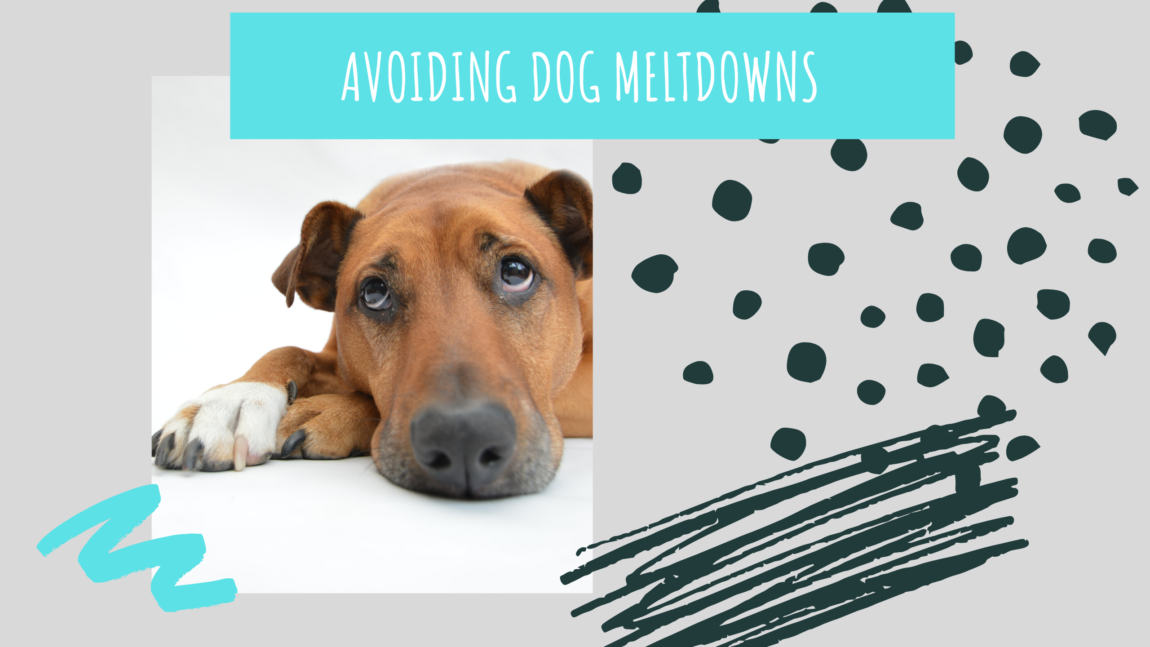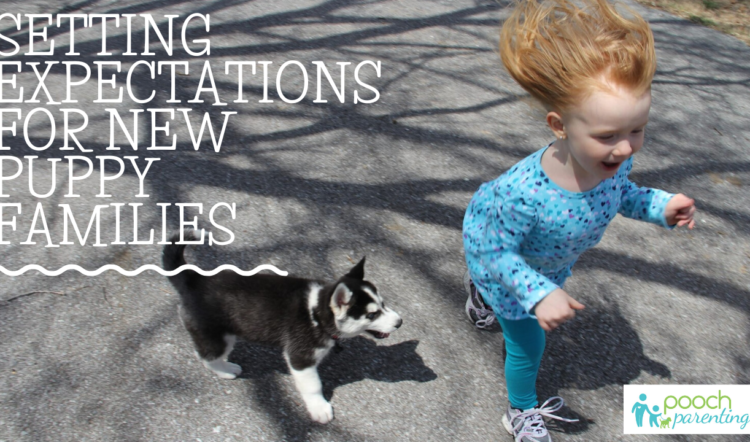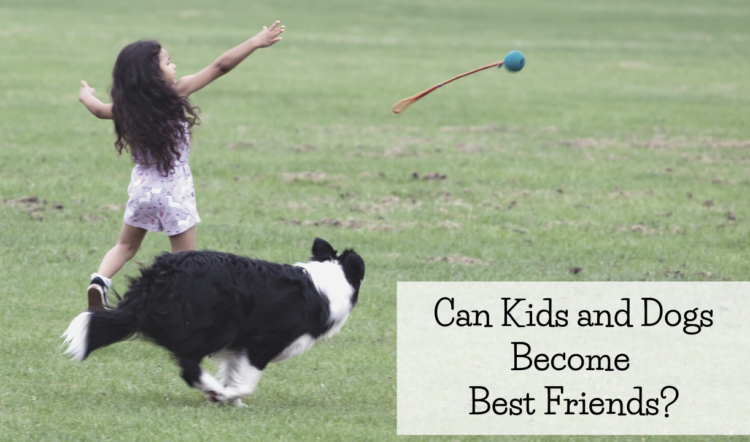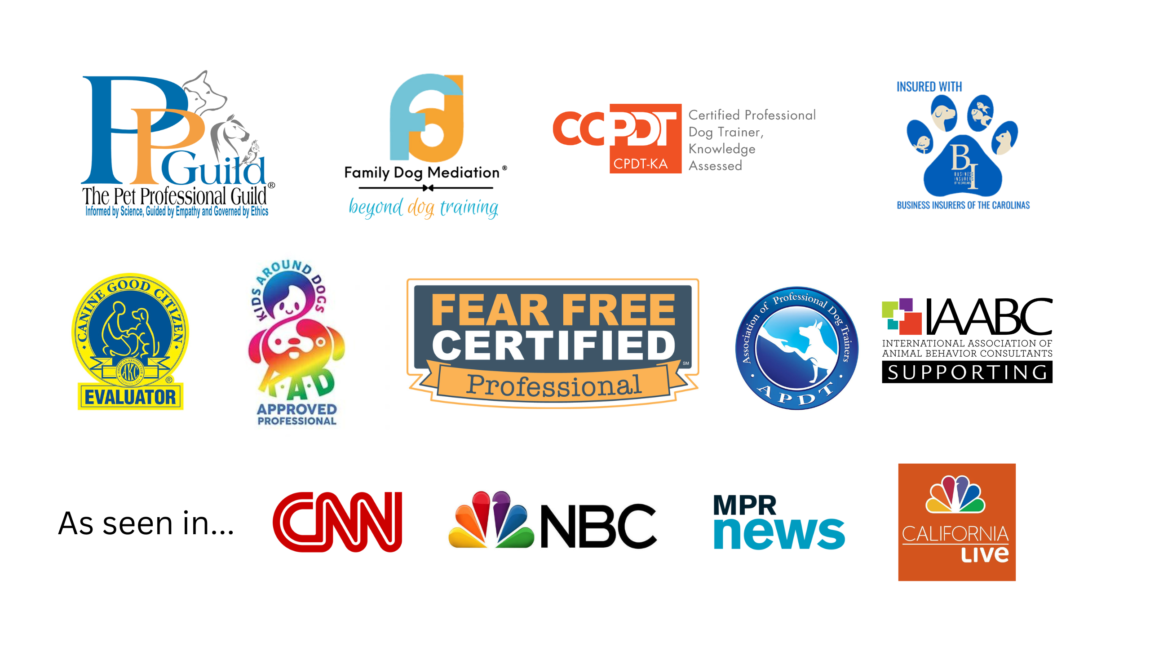People tend to get offended when you compare dogs to children, but for anyone who has spent a lot of time with either, the similarities won’t surprise you. Both kids and dogs get tired, hungry and energetic. Both are usually eager to learn, explore and play, all of which can result in feeling overwhelmed and having tantrums. While tantrums can look different in children and dogs, they probably have more in common than they don’t. Instead of screaming and hitting, dogs can cry, whine and bite. Dogs, like young children, can’t use words to express themselves, which often results in you needing to put on your detective hat and do a little sleuthing. When was the last time they ate? Do they have to go to the bathroom? Are they ready for a nap or bedtime? Perhaps a break or quiet activity is the ticket?

It’s really easy to feel badly about yourself when your kids or dog is “misbehaving.” But instead of getting frustrated or angry, it helps to put yourself in their position and consider how they might be feeling. Their behavior is usually a result of the experiences they have been having – either today or over the past several days, weeks or months. Yep, you read that right. Sometimes behavior has a cumulative effect – much like the straw that broke the camel’s back. Each little stressor is a piece of straw and eventually, BOOM – dogs and kids simply can’t take anymore. The result? You guessed it – it’s usually unpleasant behavior or simply an individual who shuts down and isn’t very responsive.
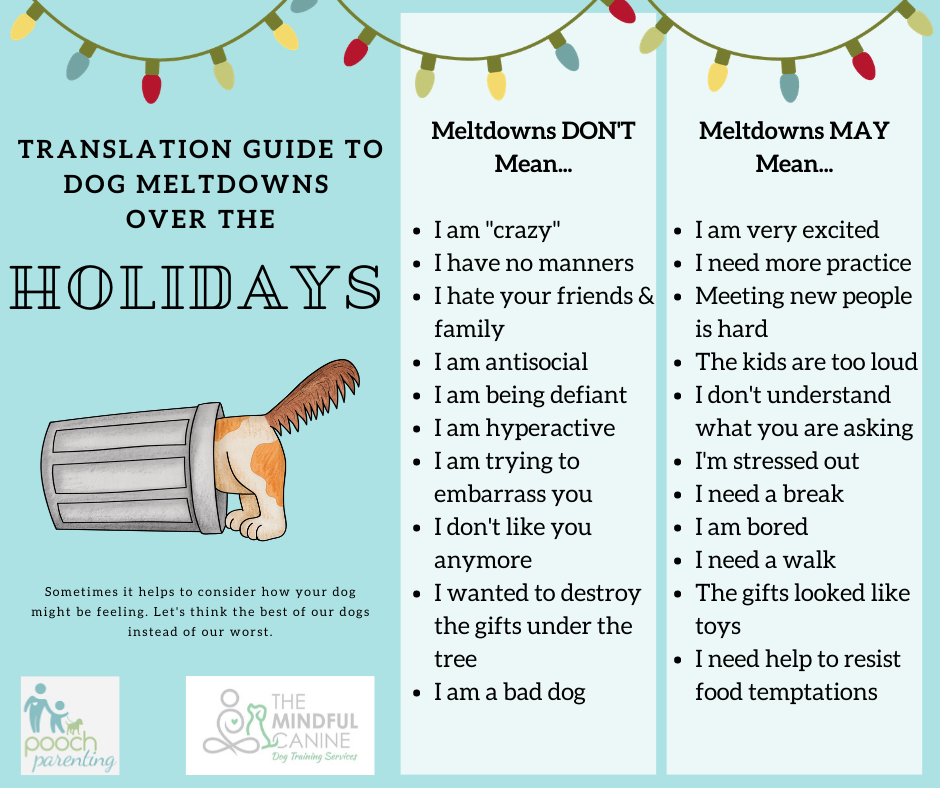
Preventing Meltdowns in Dogs
The dream is to avoid meltdowns in the first place, although that’s not always possible. But you can stack the deck in your favor with a few simple steps.
- Use a schedule.
It can help to have a rough schedule for your dog. It can include: naps, mealtimes, exercising, interactive play, and quiet chew time. By giving your dog the opportunity to play and rest, you can increase the odds that your dog will be well rested and more balanced. - Avoid multiple stressors.
Take note of the environmental input your dog is experiencing. For example, if there are unusual noises or interactions during your morning walk, perhaps you can limit new exposures during activities later in the day. If your dog is sensitive to noise and it’s garbage day, retreat to a quiet place in the house to minimize exposure to this known stressor. - Play and Rest are both important.
Play is an instrumental part of a happy, balanced life. Play can include time with you, toys, other dogs or children – whatever your dog loves to do. But so is rest. Remember to build both into your dog’s life.

Oops – Meltdown…Now What?
First, take a breath. You are not a failure. Perhaps your dog has not had a balanced day or week. Let’s evaluate what we could have done differently. For example, if your puppy is biting everyone in the house and chasing the kids relentlessly, it likely means that they are overtired or overstimulated. Pup needs a break and some quiet time. This is a great time to use a pen or crate to offer your pup somewhere quiet to rest. Some dogs go bonkers when they haven’t had enough exercise. Other dogs have the same reaction to too much exercise! Yikes! While this behavior can look the same on first glance, it helps to know your individual dog and what their routine has been in order to properly diagnose the issue.
There is lots of good news here! Your kids and dogs may have meltdowns but they aren’t trying to be “bad.” Meltdowns don’t mean that they love you any less, that they are being defiant or have no manners. They simply may mean that the kids and dogs need a break, are feeling overwhelmed or are having a hard time being social…all of which are workable. You’ve got this – all you have to do is start sleuthing. And be ready to offend someone if you compare your dog to their kid 🙂
Download our free checklist to help control your family’s safety and sanity. Learn strategies to improve your Relationship, Management and Training with your dog and even set goals for moving forward.
